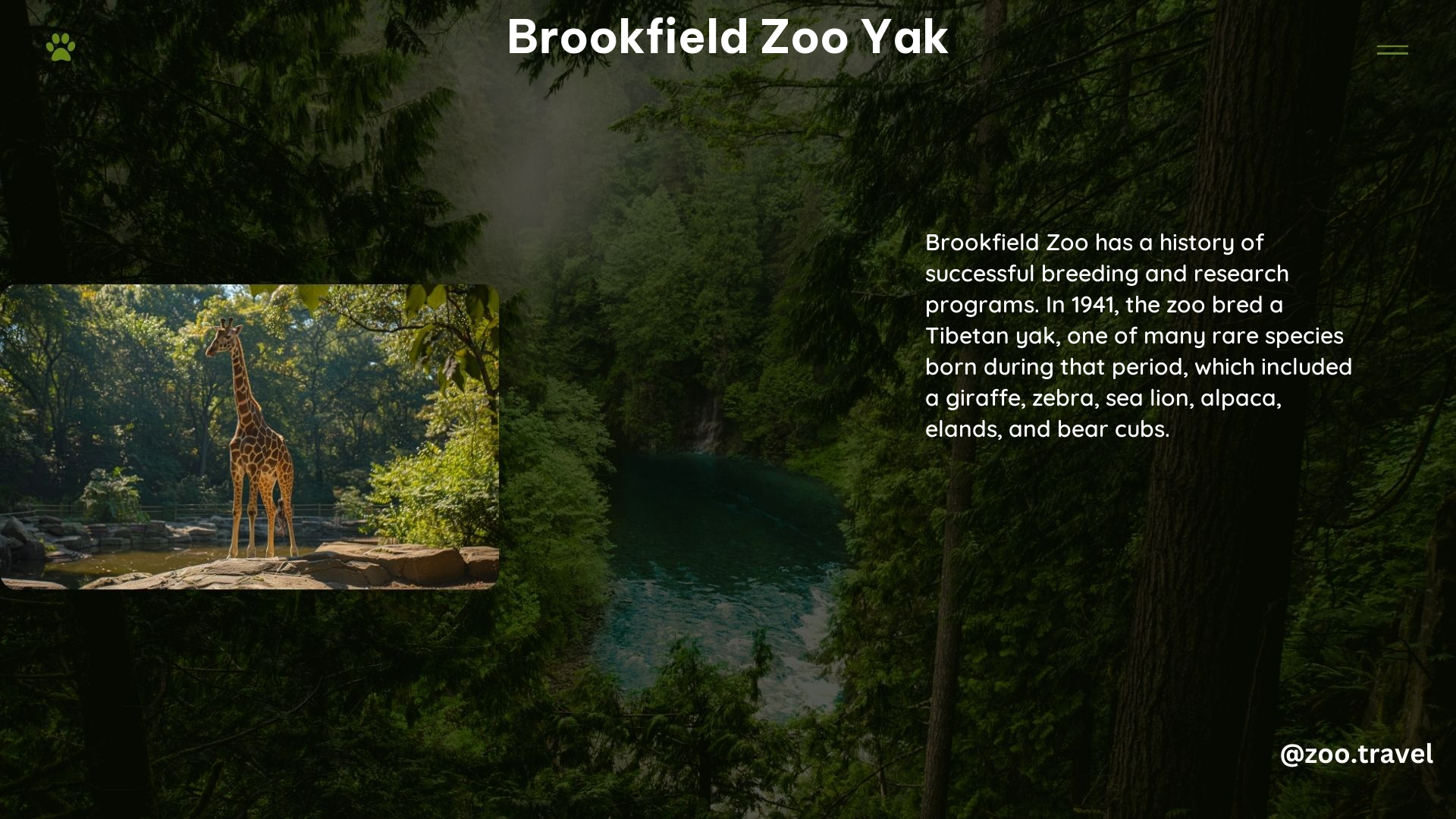Brookfield Zoo, located in the heart of Illinois, is home to a remarkable collection of animals, including the captivating Tibetan yak. As a zoo enthusiast, you’ll be delighted to discover the unique features and conservation efforts surrounding this majesic bovid species within the zoo’s expansive grounds.
The Tibetan Yak at Brookfield Zoo
The Tibetan yak (Bos grunniens) is a large, shaggy-coated bovid native to the high-altitude regions of Central Asia. Brookfield Zoo is proud to be one of the few zoos in the United States that houses this remarkable species, offering visitors a chance to witness their impressive stature and adaptations to the harsh environments they call home.
Physical Characteristics
Tibetan yaks are known for their distinctive features, including:
- Massive Build: These bovids can weigh up to 1,000 pounds, with a height of up to 6 feet at the shoulder.
- Shaggy Coat: Their thick, woolly coats provide insulation against the cold temperatures of their native habitat.
- Curved Horns: The yaks’ impressive horns can grow up to 3 feet in length, adding to their majestic appearance.
Conservation Status
The Tibetan yak is classified as “Vulnerable” on the IUCN Red List, with a population of less than 10,000 individuals in the wild. Brookfield Zoo’s involvement in the conservation of this species is crucial, as it contributes to the preservation of this unique bovid.
Brookfield Zoo’s Conservation Efforts

Brookfield Zoo has a long-standing commitment to conservation, and the Tibetan yak is no exception. The zoo’s dedicated team of researchers and animal care professionals work tirelessly to ensure the well-being and successful breeding of the yaks in their care.
Captive Breeding Program
Brookfield Zoo’s captive breeding program for Tibetan yaks aims to maintain a healthy and genetically diverse population in captivity. By carefully managing the breeding of these animals, the zoo can contribute to the overall conservation of the species and potentially reintroduce them to their native habitats in the future.
Research and Monitoring
In addition to the captive breeding program, Brookfield Zoo also conducts research and monitoring of the Tibetan yaks in their care. This includes studying their behavior, health, and adaptations to the zoo’s environment, which can provide valuable insights for conservation efforts in the wild.
Other Remarkable Animals at Brookfield Zoo
While the Tibetan yak is undoubtedly a highlight, Brookfield Zoo is home to a diverse array of other fascinating animals, each with their own unique stories and conservation needs.
Okapi
One of the zoo’s most renowned residents is the okapi, a close relative of the giraffe. Brookfield Zoo is known for its successful okapi conservation efforts, with the zoo’s okapi population serving as an important part of the global conservation strategy for this endangered species.
African Lions and Amur Leopards
Visitors to Brookfield Zoo can also encounter the majestic African lion and the elusive Amur leopard, both of which are the focus of the zoo’s conservation initiatives.
Visiting Brookfield Zoo
Brookfield Zoo is open daily from 9:30 AM to 6:00 PM, with extended hours during the summer months. Admission prices vary depending on age and residency, with discounts available for members and groups.
Before your visit, be sure to check the zoo’s website for the latest information on exhibits, events, and any COVID-19 related updates or restrictions.
Conclusion
Brookfield Zoo’s Tibetan yak is a true marvel, showcasing the remarkable adaptations and conservation needs of this vulnerable species. As a zoo enthusiast, you’ll be captivated by the opportunity to witness these impressive bovids up close and learn about the zoo’s efforts to protect them.
Whether you’re interested in the yaks, the okapi, or the zoo’s other remarkable residents, a visit to Brookfield Zoo is sure to be a memorable and educational experience.
